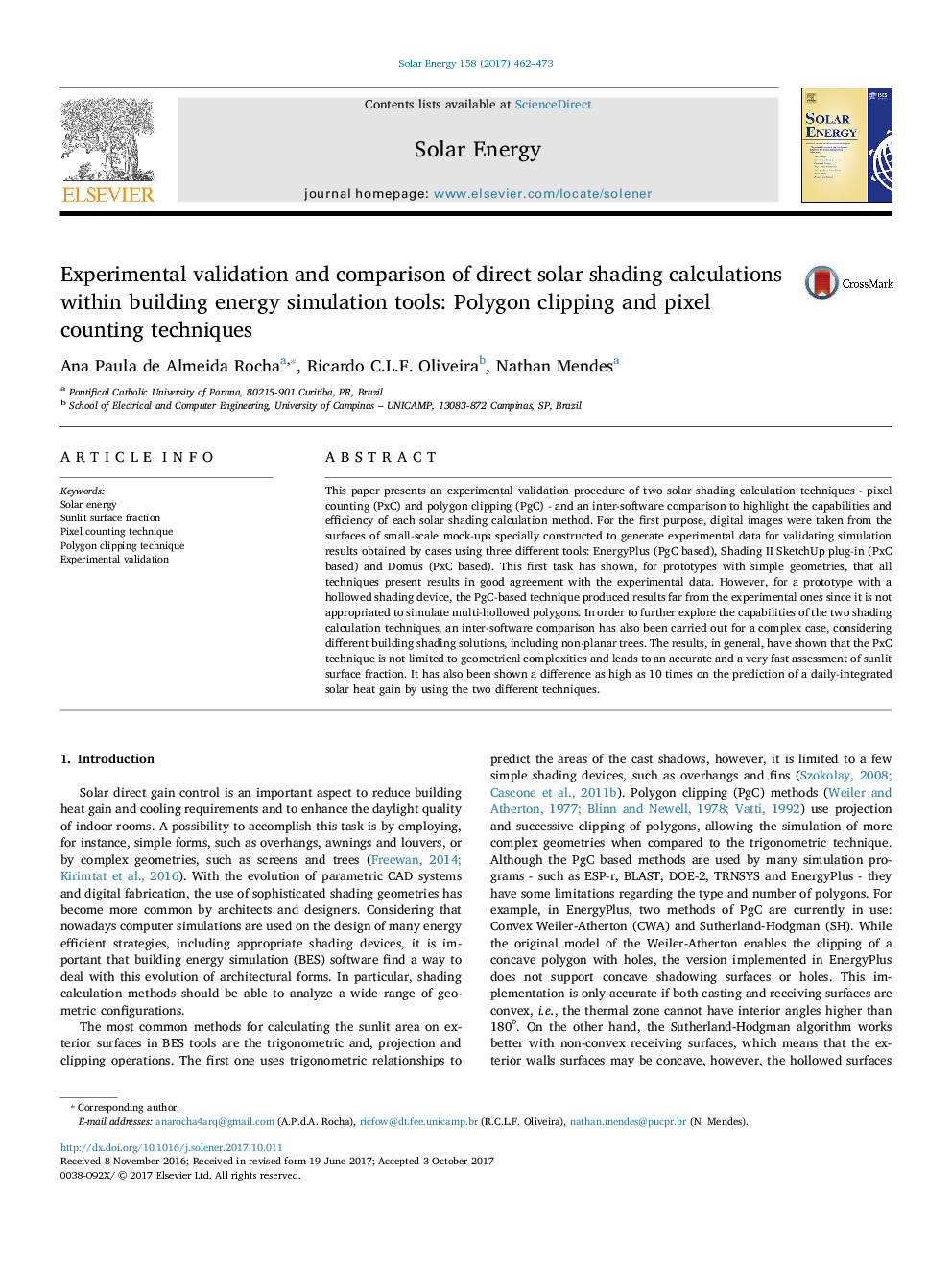ترجمه فارسی عنوان مقاله
اعتبار سنجی تجربی و مقایسه محاسبات مستقیم سایه خورشیدی در ابزارهای شبیه سازی انرژی ساختمان: تکنیک های شمارش چند ضلعی و شمارش پیکسل
عنوان انگلیسی
Experimental validation and comparison of direct solar shading calculations within building energy simulation tools: Polygon clipping and pixel counting techniques
| کد مقاله | سال انتشار | تعداد صفحات مقاله انگلیسی |
|---|---|---|
| 149241 | 2017 | 12 صفحه PDF |
منبع

Publisher : Elsevier - Science Direct (الزویر - ساینس دایرکت)
Journal : Solar Energy, Volume 158, December 2017, Pages 462-473

